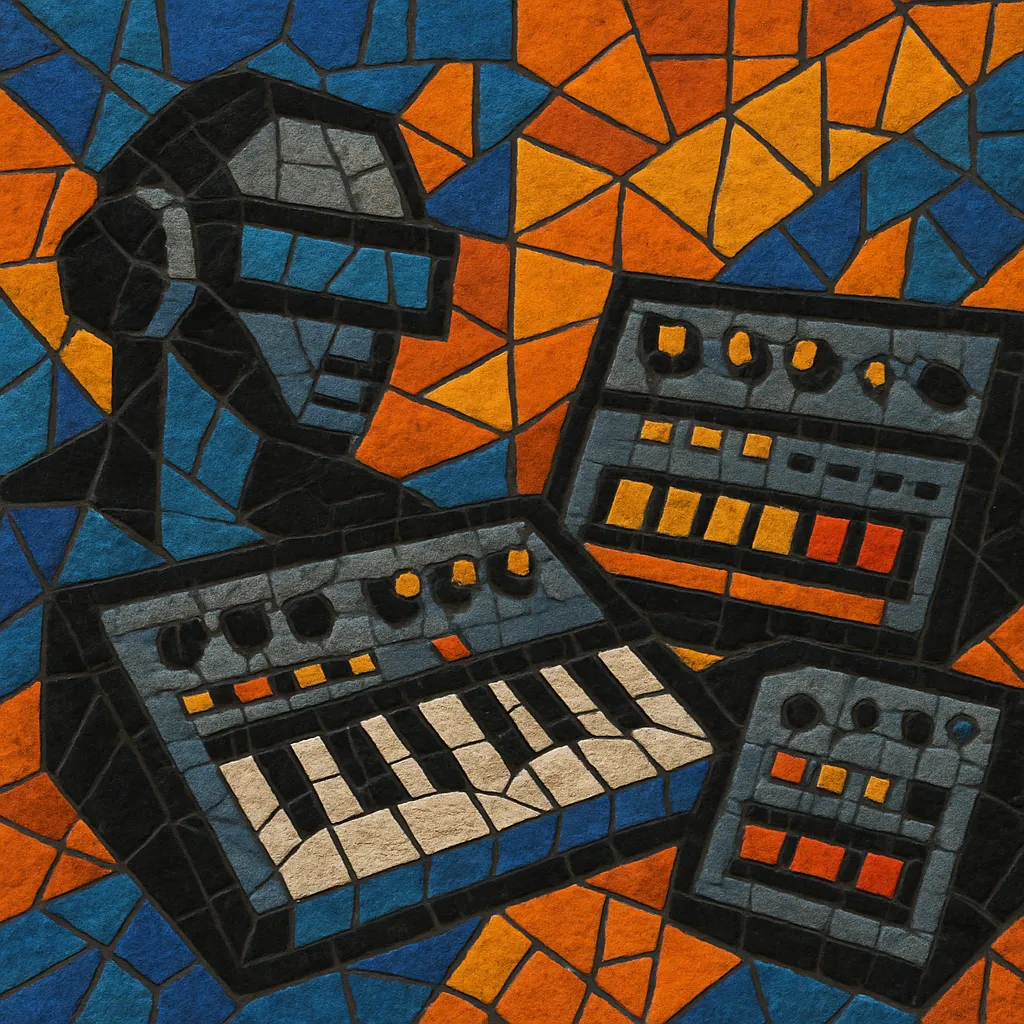Electro is an early 1980s machine-funk style built around drum machines (especially the Roland TR-808), sequenced basslines, and a futuristic, robotic aesthetic. It emphasizes syncopated rhythms, sparse arrangements, and timbres drawn from analog and early digital synthesizers.
Vocals, when present, are often delivered via vocoder or rap-style chants, reinforcing a sci‑fi, cyborg persona. Electro’s grooves powered breakdance culture, and its sonic palette—crisp 808 kicks, snappy snares, dry claps, cowbells, and squelchy bass—became foundational to later techno and bass music.
Electro coalesced in the United States as DJs and producers fused the machine precision of European electronic acts (notably Kraftwerk’s sequenced minimalism) with the groove and attitude of American funk and early hip hop. Affordable drum machines—above all the Roland TR‑808—enabled producers to build tightly programmed, syncopated rhythms that felt both mechanical and funky.
Afrika Bambaataa & the Soulsonic Force’s Planet Rock (1982), produced by Arthur Baker and John Robie, crystallized the style by marrying 808 beats to synthesized motifs inspired by Kraftwerk. A rapid burst of classics followed: Cybotron’s Clear (1983), Hashim’s Al‑Naafiysh (The Soul) (1983), Newcleus’s Jam On It (1984), Man Parrish’s Hip Hop, Be Bop (Don’t Stop) (1982), Planet Patrol’s Play at Your Own Risk (1982), and Egyptian Lover’s body‑rocking 808 workouts. Herbie Hancock’s Rockit (1983) brought turntablism and electro textures to MTV, further mainstreaming the sound.
As house and techno rose, electro’s core elements dispersed: in Miami they morphed into bass‑heavy Miami bass; in Latin and urban dance scenes into freestyle; and in Detroit they seeded the DNA of techno (via Juan Atkins/Cybotron and Model 500). Electro’s identity persisted in underground 12″ releases and B‑boy culture even as radio moved on.
The 1990s saw a Detroit electro renaissance (Drexciya, Aux 88, Dynamix II) and European expansions (Anthony Rother, UK/German “electro” scenes). The 2000s brought electroclash’s punk‑pop provocation and an enduring global electro underground. Today, labels and artists continue to refine classic 808 aesthetics, intersecting with techno bass, breaks, and contemporary synthwave while honoring the genre’s robotic funk origins.


